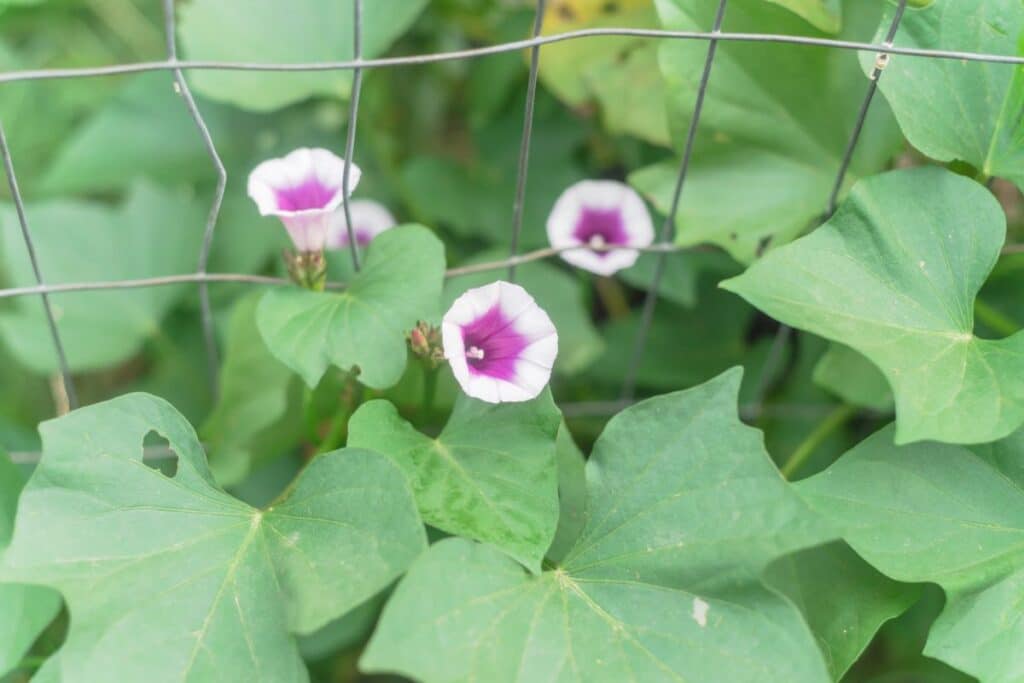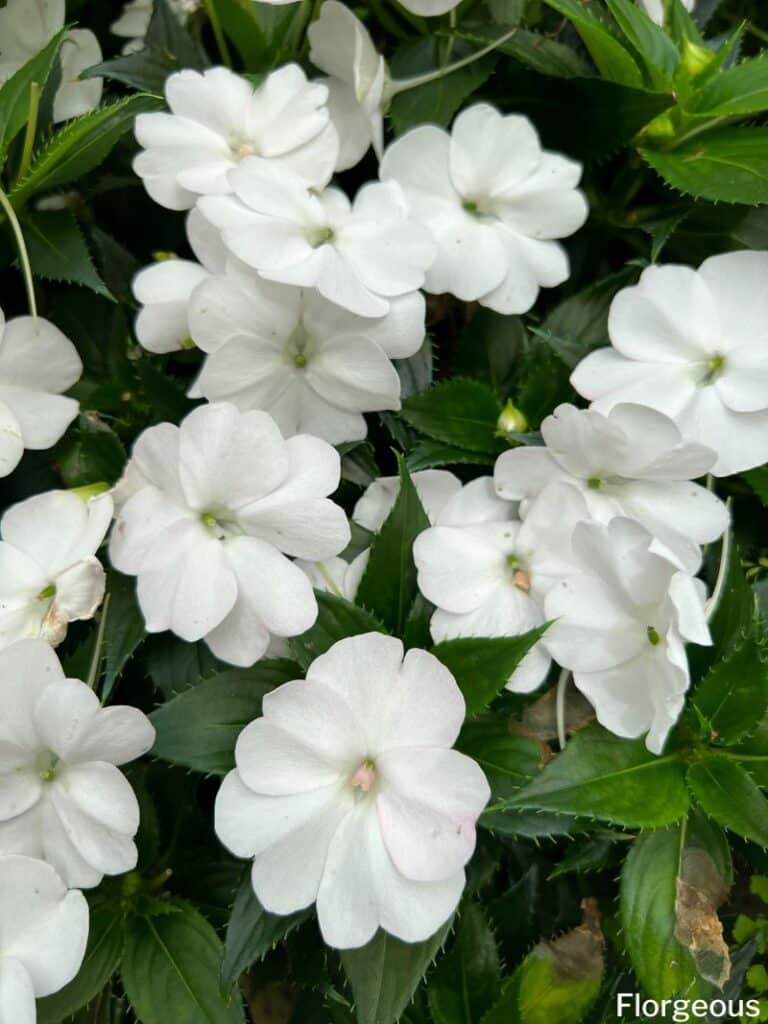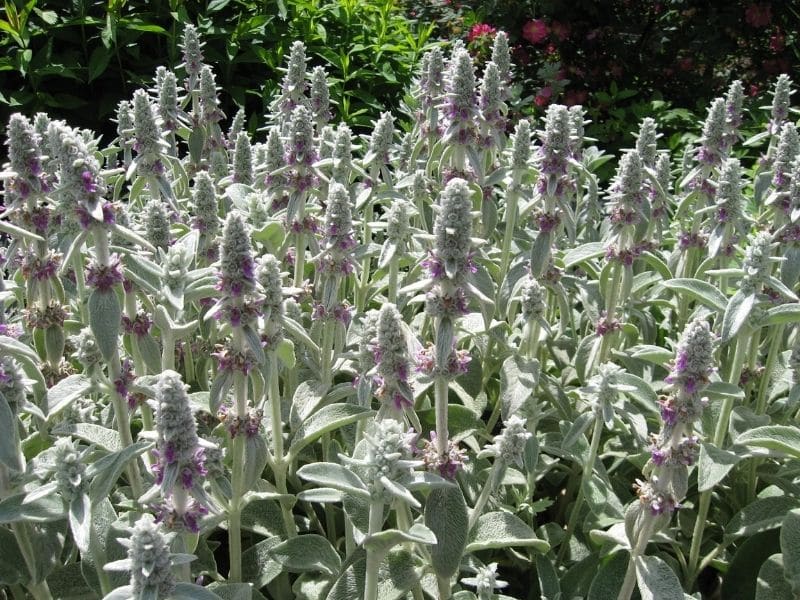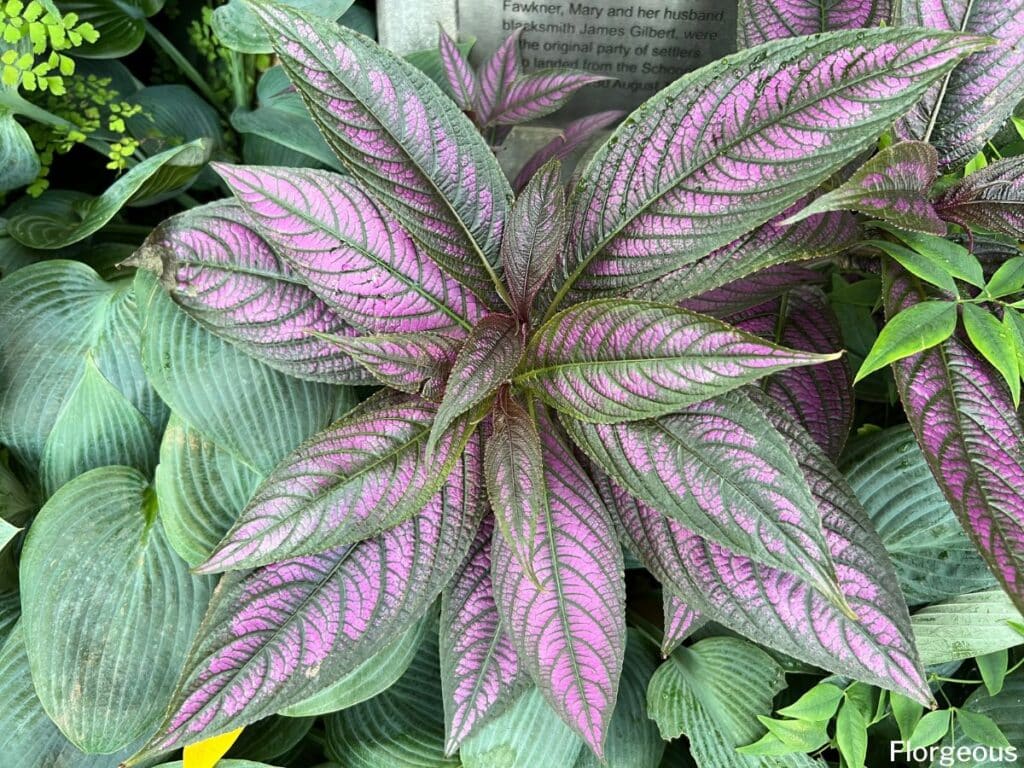The Persian shield (Strobilanthes dyerianus) is one of the most interesting foliage specimens you can include in your garden. These perennials produce long slender leaves with a deep purple shade that can look rather striking in gardens or containers.
If you’re looking for companion plants to pair with your Persian Shield, consider options that complement its striking purple and silver foliage. Some visually stunning choices are sweet potato vines, dusty miller, impatiens, lamb’s ears, or spurflowers.
For added interest, you could also try planting it alongside plants with contrasting textures, like Lamb’s Ear or Ferns. Keep in mind that Persian Shield prefers well-draining soil and partial shade, so be sure to choose plants that share similar growing preferences for the best results.
Let’s take a closer look at these Persian shield companion plants in detail and the different ways to use them in landscapes and garden containers.
What to Plant with Persian Shield Plants
When you are growing Persian shield plants, you should be careful to select plant species that have similar growing conditions so all of your plants can grow healthy and strong without receiving additional individual care.
The Persian shield plant prefers humid climates and requires sheltering from strong wind. In warmer regions, this low maintenance plant should be grown in partial shade to full shade with lots of indirect light. In colder temperatures, the striking plant can be grown in full sun.
The tender perennial will grow well in most fertile soil types as long as it drains well and it requires regular watering or it will become droopy.
Below is what grows well with Persian shield in the same humid and moist conditions that these plants require:
Sweet Potato Vines

Sweet potato vine plants (Ipomoea Batatas) are stunning companion plants to pair with Persian shields in containers or hanging baskets because they will create a waterfall effect and trail out of the basket or container. You can also use sweet potatoes as ground covers around your striking purple foliage plants to create lots of contrast.
These vine plants should be planted in well-draining soil and they prefer a sunny location but can survive with lots of dappled shade or in an area where they will receive early morning or afternoon sun.
You can choose to grow Strobilanthes dyeriana with sweet potato vines that have lime green leaves so you can create lots of contrast next to the purple foliage. Alternatively, you can pair a sweet potato variety with dark purple leaves with Persian shields for a darker-themed arrangement.
Dusty Miller
The silver foliage of dusty miller (Jacobaea martima) will create a striking contrast if you grow it next to a Persian shield bush. You can use this easy-to-grow plant in garden beds or containers because they are very handy as border plants, garden fillers, or garden edging.
Dusty miller is heat and drought-tolerant and it should be planted in full sun or the plant will become leggy. It requires moist but well-drained soil.
Because the silver foliage plant requires lots of sun, you should pair it with Persian shields in a sunny spot in your garden. These foliage plants are also shorter, which means you should be careful to position them in the front of your garden bed with the taller Persian shield plant as a background.
Additionally, both dusty miller and Persian shield plants are hardy enough to survive frost, making them excellent choices for various garden settings.
Impatiens

Impatiens (New guinea impatiens) are good companions to consider if you want to add more color to your garden. There are many different varieties of this plant with flowers in vibrant colors like white, red, yellow, coral, or pink flowers.
You can create all sorts of color combinations when you grow these flowers in your Persian shield bed.
Impatiens grow well in semi-shade areas and should be planted in free-draining soil. They prefer their soil moist and easy to care for because they will spread all over the garden floor on their own.
Impatiens flowers are shorter than Persian shield bushes. The stunning white flowers will look rather stunning as they peek out from underneath the purple leaves. Red flowering impatiens can also look charming with purple foliage but you can also grow varieties with purple flowers with them if you want a more uniform garden look.
Lamb’s Ears

Lamb’s ear plants (Stachys byzantina), also known as donkey’s ears or Jesus Flannel, are great Persian shield companions to consider if you want to add lots of contrast and texture to your garden or containers.
The silvery foliage of these plants will create plenty of contrast with the dark purple leaves and the velvety texture of the leaves will give your garden a dramatic appearance.
These foliage plants should be planted in free-drained soil that is enriched with compost. You should, however, avoid adding fertilizers because this plant doesn’t like rich soil. They are relatively drought tolerant but will grow well if watered regularly. These texture-rich plants can be grown in direct sunlight but they will also grow very well in partial sun.
Donkey ear plants are shorter and should be grown in front of your garden bed. You can also grow the annual plant around the Persian shield in containers for a stunning effect.
Silver Spurflower
Silver spurflowers (Silver Plectranthus), also known as silver shields, are members of the mint family that produce attractive velvety leaves with a silver color. This vibrant foliage plant is great for adding silvery highlights to your garden when you use it as a garden filler, ground cover, or border plant.
This versatile plant is at its happiest in free-draining soil with regular watering. It should be planted in partial sun and it is quite heat and humidity tolerant.
You can use these Persian shield companion bushes in garden beds or containers. They are shorter than Persian shield plants with a maximum height of just 30 inches tall. Because of their shorter height, they can be planted underneath, around, or in front of your taller plants.
What NOT to Plant with Persian Shield
Persian shield prefers humid and warm conditions. It won’t grow well in dry soil and the leaves can become scorched in direct sunlight in warmer climates. Because of its growing requirements, this plant shouldn’t be grown with drought-tolerant plant species like lavender, coneflowers, or bee balm.
These fast-growing plants can also smother slow-growing plant species like jade plants, or devil’s ivy. It is best to pair them with other plants that grow relatively fast.
Landscaping Ideas for Persian Shield and Companions
Now that you know more about the best companion plants for Persian Shield, it is time to discuss different ways to pair these plants in your landscape. Here is a quick look at some creative ways to pair and use them in your garden or patio.
In Mixed Containers
Persian shields are great for creating interesting planter combinations. This bright plant can be used as a thriller in the middle of a container with a contrasting variety like lambs ear, spurflower, Coleus or dusty miller as a filler plant.
You can then create a dramatic waterfall effect by adding a spiller plant to the combination that can grow over the edge of your hanging baskets or tall containers or simply decorate them indoors as houseplants.
For Bold Contrast Effects
Plant combinations that are in stark contrast with one another always attract a lot of attention. To create lots of bold contrast, you should combine the dark leaves of Persian shield with contrasting foliage plants such as dusty miller or lamb’s ears. You can also pair this dark plant with bold flowering plant-like impatiens to create a striking effect in your garden.
Persian Shield as Ground Cover
The dark leaves of this plant will also look striking if you use it as a ground cover or filler plant underneath a tall bright and bold plant like elephant’s ears, banana tree, or canna lilies.
FAQs
How to make Persian shield bushier?
To encourage bushier growth in Persian shield plants, pinch back the growing tips regularly to promote branching and encourage lateral growth. Provide bright, indirect light and maintain consistent watering to support healthy foliage development.
Why is my Persian shield dying?
Persian shield plants may decline due to various factors such as underwatering, overwatering, inadequate light, pests, diseases, or environmental stress. Assess the plant’s care routine and growing conditions to identify and address any issues promptly.
Should I mist my Persian shield plant?
Persian shield plants appreciate moderate to high humidity levels, but misting alone may not provide sufficient moisture. Instead, consider placing a humidifier nearby or grouping plants together to create a more humid microclimate. Additionally, avoid misting the leaves directly, as this can encourage fungal diseases.
Can you grow Persian shield from cuttings?
Yes, Persian shield plants can be propagated from stem cuttings. Take 4-6 inch cuttings from healthy stems, remove the lower leaves, and plant them in moist, well-draining soil or a propagation medium. Place the cuttings in a warm, bright location, and they should root within a few weeks.
Final Thoughts
Persian shields are versatile plants that have many applications in the garden. They can look mesmerizing on their own but will look especially good if you pair them with other vivid plants like sweet potato vine plants, dusty miller, lamb’s ears, or spurflowers or you can pair them with colorful flowering plants like impatiens.
We hope that this guide was useful for identifying the best companions to grow with Persian shields so you can create a stunning garden filled with lots of color and charm.
See more:







